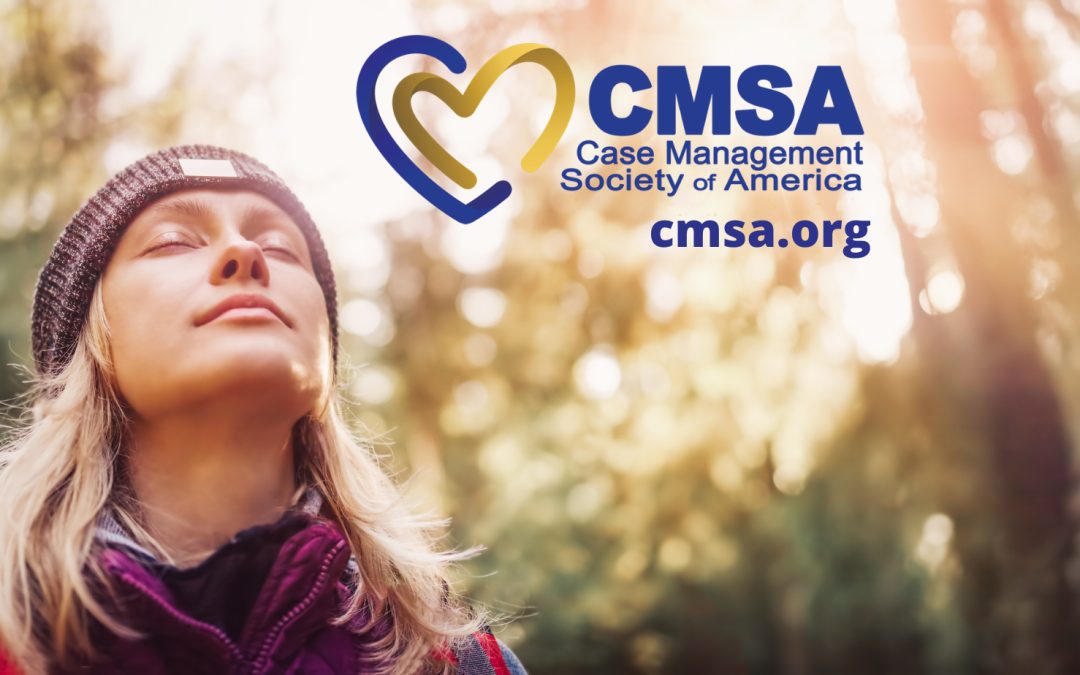By Craig Boguslawski, RN, CCM
We Need to Breathe (and We Need to Breathe Oxygen to Live)
COVID-19 has caused many infected people to develop hypoxia.
An assessment of persons with dyspnea after covid frequently have a low oxygen saturation via pulse oximeter and are hypoxic without obvious distress. Long term hypoxia can range from memory problems to loss of endurance.
The literature discussing COVID-19 (SARS COV2) infection causing hypoxia and support for oxygen therapy is still incomplete. Ongoing research is needed to solve the common shortness of breath complaint. One path is to look at innovations in treatment. The Noble prize in Physiology or Medicine was awarded in 2019 for transcription factor called HIF, Hypoxia Inducible Factor. They demonstrated the response by gene expression to changes in oxygen is directly coupled to oxygen in the animal cell allowing immediate cellular responses to occur to oxygenation.5 They called this response silent hypoxia.
Silent hypoxia is also a concern in patients after a COVID-19 infection. The individual has a low oxygen saturation without respiratory distress. In medicine and nursing, triaging patients allows immediate treatment for those who have severe complaints and provides treatment to patients without distress as time allows. The silent hypoxia sufferers need focused treatment including oxygen. Oxygen is the best treatment with the least amount of side effects and the most reasonable cost, when considering the return on the investment.
Oxygen then, is reasonable treatment of cellular hypoxia, titrated to oxygen saturation, and can be short term if treated early enough. When there is damage to the lung tissue, treatment is necessary. An effective treatment is called COVID home oxygen therapy or (COVID-HOT) delivered via nasal cannula.
To use oxygen at home, the cost includes the nasal cannula, rental of a home oxygen, and portable oxygen concentrator. The machines can be purchased or rented and use a lot of electricity. There may be a medical use discount program with a local electric provider. The oxygen therapy could be supplemented with an exercise program either through physical therapy or home exercises with a goal to restore endurance to pre-infection level.
Outdated Utilization review programs add challenge in obtaining home-use authorization for oxygen. The use of oxygen for healing is not new. It should be used to help with contemporary illness such as SARS COV2 viral infection. The Utilization Review guidelines need update to consider the idea of supplemental oxygen.
The supplemental oxygen recommendation is based on a preventive model, treating early to reduce long-term damage. Without the supplemental oxygen the body struggles in a hypoxic state slowing pr preventing recovery. If the early oxygen treatment for hypoxia has helped the body to heal and recover, then the need for oxygen is no longer necessary.
Once an infected person is healed and recovered, they can breathe easy.
Learn more about how early engagement and innovative strategies can reduce long term claims of COVID-19 “Long Haulers” in the CMSA Educational Resource Library with “COVID-19 Long Haulers: Avoiding the Next Mega Claims”.
Click for the full course description and objectives: https://www.pathlms.com/cmsa/courses/36289
References:
-
- Chandra A, Chakraborty U, Pal J, et al Silent hypoxia: a frequently overlooked clinical entity in patients with COVID-19 BMJ Case Reports CP 2020;13:e237207.
- Choong, C. K. et al. Clinical Characteristics and Treatment Patterns Among Patients Diagnosed With Cluster Headache in U.S. Healthcare Claims Data. Headache 2017; 57(9), 1359–1374
- Cohen, AS, Burns, B, Goadsby, PJ. High-flow oxygen for treatment of cluster headache: a randomized trial. JAMA. 2009;302(22):2451-2457
- Fogan L. Treatment of cluster headache. A double-blind comparison of oxygen v air inhalation. Arch Neurol. 1985;42:362–363
- Noble assembly. How cells sense and adapt to oxygen availability, 2019 https://www.nobelprize.org/prizes/medicine/2019/advanced-information/
- Pearson, S.M., et al. Effectiveness of Oxygen and Other Acute Treatments for Cluster Headache: Results from the Cluster Headache Questionnaire, an International Survey, Headache 2019;0:l-15
- Robbins, M.S., et al., Treatment of Cluster Headache: The American Headache Society Evidence-Based Guidelines. Headache 2016;56:1093-106
- Sardesai, I., Grover, J., Garg, M., Nanayakkara, P., Di Somma, S., Paladino, L., Anderson, H. L., 3rd, Gaieski, D., Galwankar, S. C., & Stawicki, S. P. (2020). Short Term Home Oxygen Therapy for COVID-19 patients: The COVID-HOT algorithm. Journal of family medicine and primary care, 9(7), 3209–3219. https://doi.org/10.4103/jfmpc.jfmpc_1044_20


This is great and I loved the title, very catchy!
This is very important information that can be used for for those post surgical patients that desaturate during surgery that may benefit from home oxygen and possibly aid in a quicker recovery.
Important topic & great recommendation to have Oxygen Utilization Guidelines checked for any needed updates. I attended the session you suggested from the 2021 Conference & finished the current issue of CMSA Today. Both very informative.
Long COVID will have lasting effects on so many people. Important topic!
Very informative,
thank you for sharing